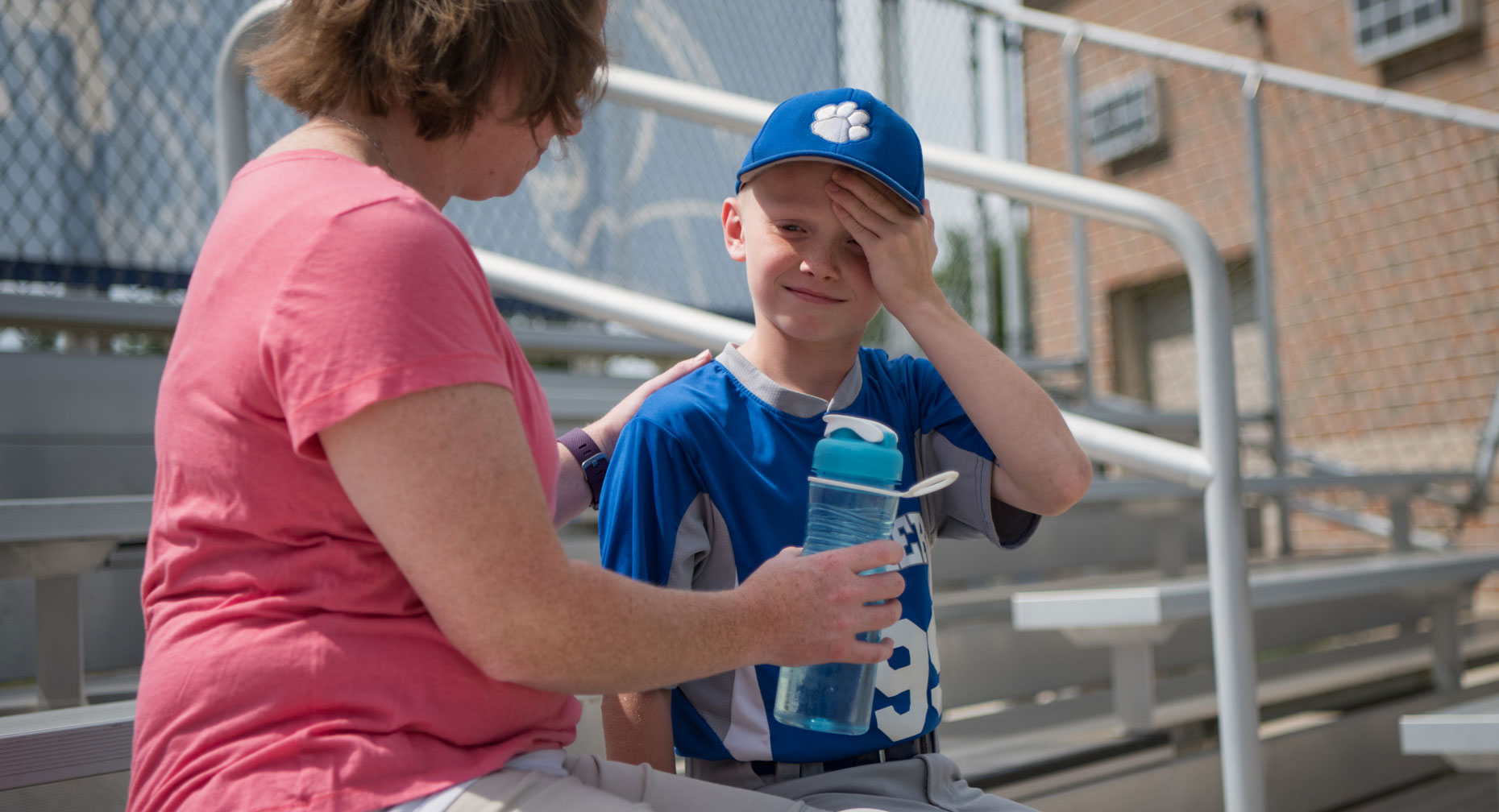When Children Have Headaches (Instead of Causing You One)

Answer a few questions and we'll provide you with a list of primary care providers that best fit your needs.
Of course your little darlings can cause YOU a headache. But sometimes they have a headache of their own.
Tension headaches are the most common in kids, and usually caused by stress. The most frequent symptoms are dull pain on both sides of the head that comes on slowly. It may involve pain in the back of the head or neck and a change in sleeping habits. Unlike migraines, symptoms typically don’t include nausea or light sensitivity.
Migraine headaches are throbbing or stabbing on one or both sides of the head. They have other symptoms like nausea, vomiting, light or sound sensitivity. They might include unusual sensations in the head like tingling, burning or squeezing. Migraines tend to run in families and can begin at age 7 for boys and 10 for girls. About 20 percent of teens have migraines.
Secondary headaches are the result of an illness or health problem. The flu or cold, asthma, sinus infection, dehydration, hunger and vision problems are examples. These headaches go away when the illness or problem subsides.
Some kids have fewer headaches once they are reassured there is nothing seriously wrong.
When to Call the Doctor
Call your pediatrician or family physician if:
- Severe pain comes on suddenly
- Pain includes dizziness, weakness of the arms or legs, poor coordination
- Your child also has systemic symptoms, such as fever and weight loss, or secondary risk factors, such as cancer or autoimmune disease
- The headache is worse when your child is upright, but improves on lying down
- The headache progressively worsens or changes from a previous headache pattern
- The headache is brought on by exertion or by exhaling against a closed airway (usually done by closing the mouth and pinching the nose shut while pressing out, as if blowing up a balloon. This is called the Valsalva maneuver.)
- The headache begins in the back of the head with brief, severe and shock-like pain
Diagnosing a Headache
The doctor’s first priority will be to rule out increased pressure in the brain from tumor, infection or blood clots (all very rare). The cause of a headache can be puzzling, so the more information you can provide, the better, including situations at school or home, unusual food or drink, or a recent change in environment.
Expect a thorough physical exam. If the pain is severe, your child’s doctor may order diagnostic testing like a CT scan or MRI.
If an obvious cause isn’t found, the doctor may recommend that your child see an ophthalmologist to rule out eye problems.
Treating a Child’s Headache

Regular sleep, improved eating habits (more water, less sugar and caffeine), and an over-the-counter painkiller may send a headache on its way. Your child’s doctor may recommend a prescription painkiller and/or stress management.
In the case of migraines, the doctor might prescribe a preventive medication to avoid another migraine. A quiet, darkened room often helps migraine pain subside, along with plenty of rest.
Some kids have fewer headaches once they are reassured there is nothing seriously wrong.
Don’t let your child’s headaches control your home or her schooling. If that’s the case, ask your doctor for help.
Answer a few questions and we'll provide you with a list of primary care providers that best fit your needs.
Source: National Headache Foundation; American Association for Pediatric Ophthalmology and Strabismus; HealthyChildren.org




